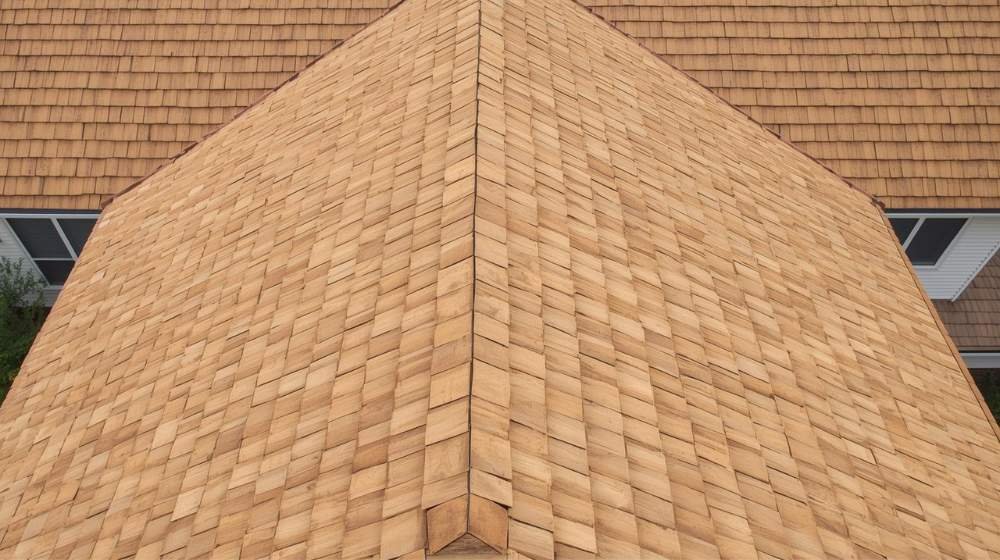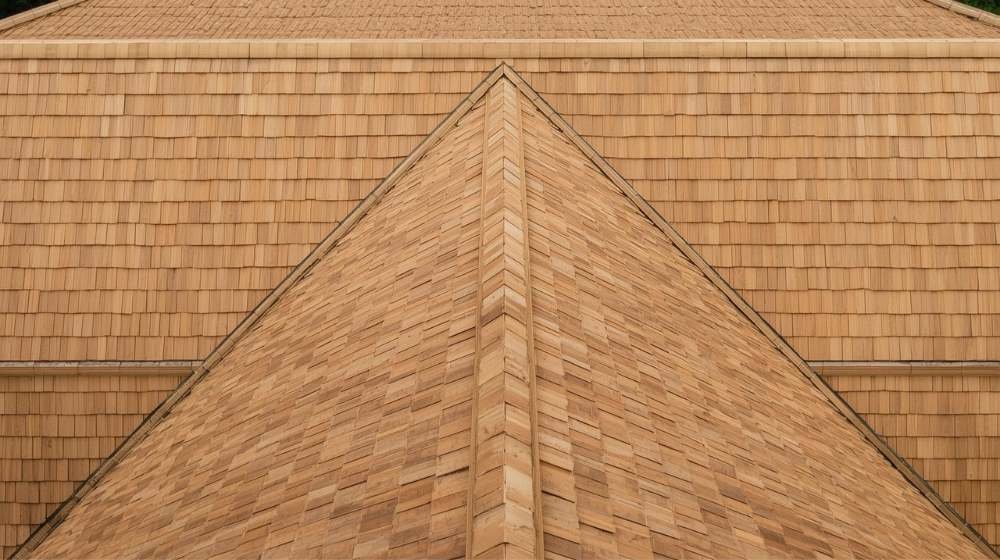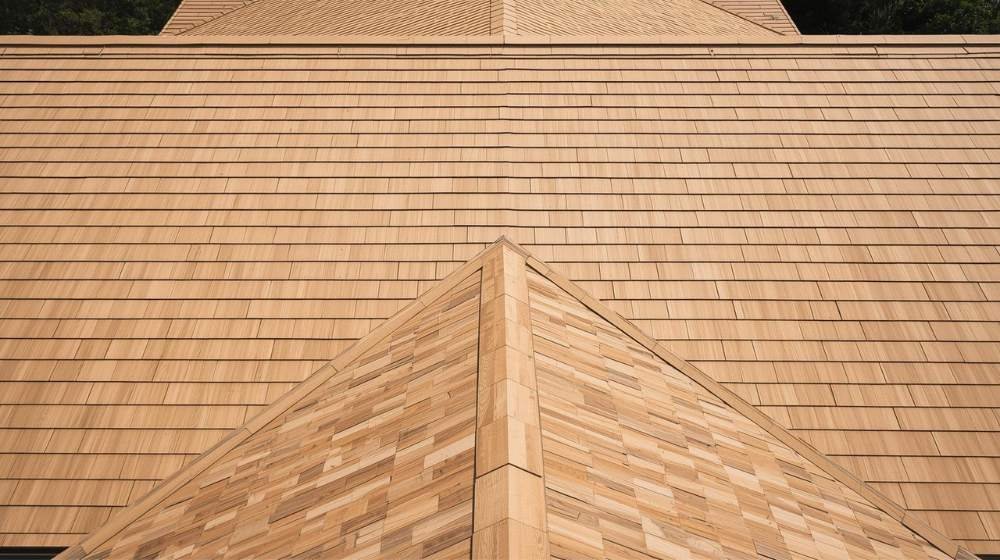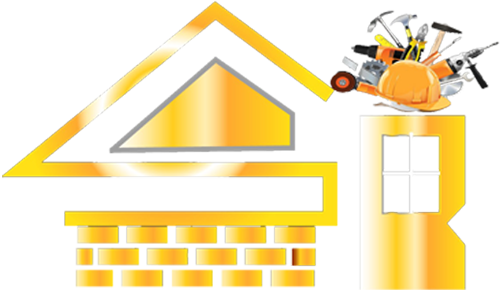
Are you trying to decide between wood shakes and wood shingles for your roof? It doesn’t have to be hard to choose the right material. Both wood shakes and wood shingles offer unique benefits, but they are quite different. In this post, we will help you understand these differences.
We will look at key factors like cost, durability, installation, and maintenance. You’ll also learn about how each option holds up in extreme weather. By the end, you’ll have a clear idea of which option fits your home and needs. Let’s dive into the details and help you make the right choice.
What Is the Difference Between Wood Shake vs Wood shingles?
Wood shakes and wood shingles are both made from wood, but they differ in their cutting methods and appearance. Wood shakes are thicker and rougher. It is created by splitting logs, while shingles are thinner and smoother, made by sawing the wood. Shakes offer a rustic look, while shingles provide a more uniform and sleek appearance. These differences affect installation, durability, and maintenance for both materials.
10 Differences Between Wood Shakes and Wood Shingles
In this section, we’ll break down the main differences between wood shakes and wood shingles. We’ll compare them based on material, installation, cost, and more to help you make an informed decision.
How Wood Shakes and Wood Shingles Are Made
- Wood Shakes: Wood shakes are made by splitting logs along the grain, which results in thicker, more uneven pieces. This natural process gives them a rustic and textured appearance.
- Wood Shingles: Wood shingles are created by sawing logs into thin, uniform pieces. The result is a smooth surface, making them easier to install but less rugged in appearance.
- Cedar: Both shakes and shingles are often made from cedar due to its resistance to rot and insects. It also provides a beautiful, natural look.
- Redwood: Redwood is sometimes used for both shakes and shingles. It is durable and offers a rich color, but it is more expensive than cedar.
- Pine: Pine is a more affordable option for both materials. However, it may not last as long as cedar or redwood and is more prone to damage.
- Cypress: Cypress is another popular material used for wood shakes and shingles. It resists moisture and decay, which makes it ideal for humid environments.
The Visual Differences Between Wood Shakes and Wood Shingles
Wood shakes have a rough, textured look with edges that aren’t straight. It adds a more natural, rustic appearance to your roof. They often show the grain of the wood, which gives them a more handcrafted feel. On the other hand, wood shingles have a smooth, uniform finish. It creates a sleek and polished look. Shingles are typically more consistent in shape, which makes them perfect for a more refined or traditional style.

Which Is Easier to Install: Wood Shakes or Wood Shingles?
| Installation Aspect | Wood Shakes | Wood Shingles |
| Preparation Time | More time is needed due to uneven shapes. | Quick preparation due to uniform size. |
| Skill Required | Requires skilled installation. | Easier to install with less skil |
| Fitting | Must be fitted individually, making it slower | Fitting is faster due to uniform size. |
| Labor Cost | Higher labor costs due to complexity. | Lower labor costs due to easier setup. |
| Installation Time | Takes longer due to the irregularities. | Faster installation due to uniformity. |
Which Lasts Longer: Wood Shakes or Wood Shingles?
Wood shakes generally last longer than wood shingles due to their thicker build. They can better prevent harsh weather and have a longer lifespan, especially if made from durable woods like cedar or redwood.
Wood shingles, although durable, tend to have a shorter lifespan due to their thinner nature and increased vulnerability to the elements. Generally, wood shakes can last 30 to 40 years, while shingles last 20 to 30 years.
Understanding the Price Differences Between Wood Shakes and Shingles
| Cost Aspect | Wood Shakes | Wood Shingles |
| Material Cost | $4.50–$8.50 per sq. ft. | $6–$11 per sq. ft. |
| Labor Cost | $3–$7 per sq. ft. | $2–$5 per sq. ft. |
| Repair Cost | $200–$1,000 per repair | $100–$500 per repair |
| Installation Cost | $15–$25 per sq. ft. | $13–$18 per sq. ft. |
How Heavy Are Wood Shakes Compared to Wood Shingles?
Wood shakes are heavier than wood shingles. A wood shake typically weighs around 3-4 pounds per square foot, while wood shingles are lighter, weighing about 2-3 pounds per square foot. This weight difference means that shakes require a stronger roof structure for support. Shingles, being lighter, are easier to install and do not demand as much structural reinforcement.

Which Material Holds Up Better in Brooklyn’s Extreme Weather?
In Brooklyn’s extreme weather, wood shakes are the better choice. Here’s why:
- Weather Resistance: Shakes handle high winds and heavy rain better due to their thicker structure.
- Moisture Resistance: Wood shakes, especially cedar, resist moisture better, which makes them less likely to warp or rot in humid conditions.
- Durability: Wood shakes last longer and resist cracking or splitting in harsh weather.
- Heat Insulation: Shakes provide better insulation. It keeps homes cooler during Brooklyn’s hot summers and warmer in the winter.
Which Provides Better Insulation: Wood Shakes or Shingles?
Wood shakes offer better insulation than wood shingles. The thicker construction of shakes creates an extra barrier against temperature fluctuations. This helps keep your home cooler in the summer and warmer in the winter. The uneven surface of shakes also creates an air gap, which enhances insulation even further. In contrast, wood shingles, being thinner, do not provide the same level of insulation but still offer some benefits for regulating temperature.
Which Requires Less Upkeep: Wood Shakes or Wood Shingles?
Wood shingles require less maintenance compared to wood shakes. Since they are smoother and more uniform, shingles are less likely to catch scraps and dirt. It makes them easier to clean. Wooden shakes, with their rougher surface, may collect more dirt and moisture, which can cause faster wear and more frequent maintenance. Shingles are also less likely to break or distort, which means they need fewer repairs.
Pros and Cons of Wood Shingles
It’s important to know the pros and cons of wood shingles to make an informed decision before installing them on your roof. Understanding both the benefits and drawbacks helps you to make the right decision. This knowledge also helps with proper maintenance and ensures the longevity of your roof.
Benefits of Wood Shingles
- Aesthetic Appeal: Wood shingles give your roof a natural, classic look. The warm tones of wood add charm and beauty to any home. They also develop a unique, grayish-silver patina as they age. It enhances their rustic charm.
- Eco-Friendly: Wood is a renewable resource, which makes wood shingles an environmentally friendly choice. They are biodegradable, which helps reduce waste. If you choose responsibly sourced wood, it can contribute to sustainability.
- Durability: Wood shingles, especially those made from cedar or redwood, are naturally resistant to rot and insects. This makes them durable and long-lasting. With proper maintenance, they can last 30 to 50 years.
- Insulation: Wood shingles offer natural insulation. It keeps your home cool in the summer and warm in the winter. The wood helps regulate indoor temperatures by acting as a barrier. This can lead to energy savings over time.
- Fire Resistance (when treated): Cedar and redwood shingles are naturally fire-resistant when properly treated and maintained. Fire-resistant treatments add an extra layer of protection. This can be especially important in areas prone to wildfires.
- Energy Efficiency: Wood shingles have a natural ability to reflect heat. It reduces the amount of heat that enters your home. This keeps your home cooler, especially in sunny climates. It can lower your energy bills by reducing the need for air conditioning.

Disadvantages of Wood Shingles
- Higher Initial Cost: Wood shingles tend to be more expensive than other roofing materials, such as asphalt. The cost of materials and labor for installation might be high. Before making a choice, consider how it will impact your budget.
- Maintenance: Wood shingles require regular maintenance to avoid issues like moss growth and rotting. You’ll need to clean and treat them every few years to prolong their lifespan. Without proper care, their durability can be reduced.
- Vulnerability to Weather: Wood shingles can be damaged by extreme weather like heavy storms or hail. Excessive moisture can cause them to warp, crack, or decay. In areas with heavy rain or snow, this can be a significant concern.
- Fire Hazard: Although treated wood shingles are fire-resistant, untreated shingles are highly flammable. Fire safety rules may require extra steps to be taken in homes that are at risk of wildfires. It’s important to choose fire-treated wood for added protection.
- Weight: Wood shingles are heavier than other roofing materials, like asphalt or metal. This may require additional structural support for your roof. If your roof is not properly reinforced, it could lead to damage over time.
- Limited Color Options: Unlike other materials, wood shingles have a natural color range, mainly from brown to gray. If you want a roof with specific colors, wood shingles may not offer the variety you’re looking for. However, staining can give some control over the appearance.
Pros and Cons of Wood Shakes
Wood shakes are a popular choice for many homeowners due to their outlook and durability. However, like all materials, they come with both advantages and disadvantages. Let’s take a closer look at what makes wood shakes a great option, as well as their downsides.
Advantages of Wood Shakes
- Durable and Long-Lasting: Wood shakes are thicker and more durable, lasting up to 30-40 years with proper maintenance. They are resistant to extreme weather conditions like high winds and heavy rain.
- Natural and Unique Look: Each wood shake has a unique texture and grain pattern, which gives your roof a one-of-a-kind, rustic appearance. This adds charm and character to your home.
- Excellent Insulation: The thicker construction of shakes helps with better insulation. It helps keep the home cooler in summer and warmer in winter.
- •Fire Resistance: Wood shakes can be fire-resistant if you take care of them properly. Many are coated with fire-retardant treatments to provide added safety.
- Environmentally Friendly: Wooden shakes, made from natural wood such as cedar, are biodegradable and offer a more eco-friendly option compared to synthetic roofing materials.
- Increases Property Value: Homes with wood shakes often have a higher resale value due to their aesthetic appeal and long-term durability. Many buyers find the natural look.

Disadvantages of Wood Shakes
- Higher Initial Cost: Wood shakes are more expensive than shingles due to the more complex manufacturing process and higher material costs. This can add to the overall budget for your roofing project.
- Higher Maintenance Needs: Wooden shakes require regular maintenance, such as cleaning and resealing. This can be time-consuming and costly in the long run.
- Vulnerable to Moisture: If not properly treated, wood shakes can absorb moisture, potentially leading to rot or mold growth. Regular maintenance is essential to avoid this issue.
- Prone to Cracking: Wood shakes can crack or split over time due to extreme weather or aging. This may lead to the need for more frequent repairs.
- Requires Stronger Roof Structure: Due to their weight, wood shakes may require a stronger roof structure for support. This could mean additional costs for structural reinforcement.
Premium Options for Both Wood Shingles and Shakes
When it comes to roofing, there are premium options that provide enhanced performance and appearance. These options are crafted from higher-quality materials and feature additional benefits for those seeking the best for their homes.
Premium Options for Wood Shingles:
- Cedar Shingles: Cedar shingles are a popular premium option due to their natural beauty and resistance to insects and decay. They also provide excellent insulation and a distinctive appearance.
- Redwood Shingles: Redwood shingles are another high-end option known for their rich color and durability. They perform well in various weather conditions and have a long lifespan.
Premium Options for Wood Shakes:
- Hand-Split Cedar Shakes: Hand-split cedar shakes are made by splitting logs by hand, which gives each piece a unique texture. This adds to their rustic charm and makes them a durable, high-quality choice.
- Pressure-Treated Shakes: Pressure-treated wood shakes are treated with preservatives that protect them from rot and insects. These shakes are a great choice for longevity and performance.
Different Types of Grains in Cedar Shakes and Shingles
Cedar is a popular material for both shakes and shingles due to its durability and style. The grain of the cedar affects the texture, strength, and overall appearance of the wood. Understanding the different types of grains will help you make a more informed choice for your roof.
Grains in Cedar Shakes
- Flat Grain: Flat grain shakes have a smooth and even texture. They are more uniform and are easier to install, but they do not have the same natural, rustic look as other grain types.
- Edge Grain: Edge-grain shakes are cut from the edge of the log, which gives them a stronger and more durable structure. They tend to last longer and have a distinct visual appeal.
Grains in Cedar Shingles
- Vertical Grain: Vertical grain shingles are cut from the heart of the tree, making them more stable and resistant to shrinking. They are a premium choice. It offers a clean and refined appearance.
- Horizontal Grain: Horizontal grain shingles are cut from the sides of the tree and give them a more rustic and textured look. They are less stable than vertical grain shingles but still offer a unique aesthetic.

Why should you choose a professional roofing contractor?
Are you looking for an expert roofing contractor in Brooklyn, NYC? SR General Construction has you covered! Our business is located at 8807 Avenue B, Brooklyn, NY 11236, United States, in the Canarsie area.
We proudly serve all areas of Brooklyn with high-quality, durable roofing solutions. From new installations to repairs and maintenance, we provide the best service at affordable prices. Contact us and experience why we’re Brooklyn’s roofing experts!
FAQ
1. What’s the main difference between wood shakes and wood shingles?
Wood shakes are thicker and hand-split, which gives them a rough texture. Wood shingles are thinner, machine-cut, and have a smooth, uniform appearance.
2. Which lasts longer: wood shakes or shingles?
Wood shakes typically last 30–40 years, while wood shingles last about 20–30 years. It depends on maintenance and climate.
3. Which is better for humid climates: shakes or shingles?
Wood shakes, especially cedar, are more resistant to moisture and decay, which makes them suitable for humid climates.
4. Do wood shakes absorb more water than shingles?
Yes, if not properly treated, wood shakes absorb more water, which may lead to issues like rot.
5. What is the average cost of installing wood shakes?
The cost can range from $6 to $16 per square foot. It depends on the material and labor.
